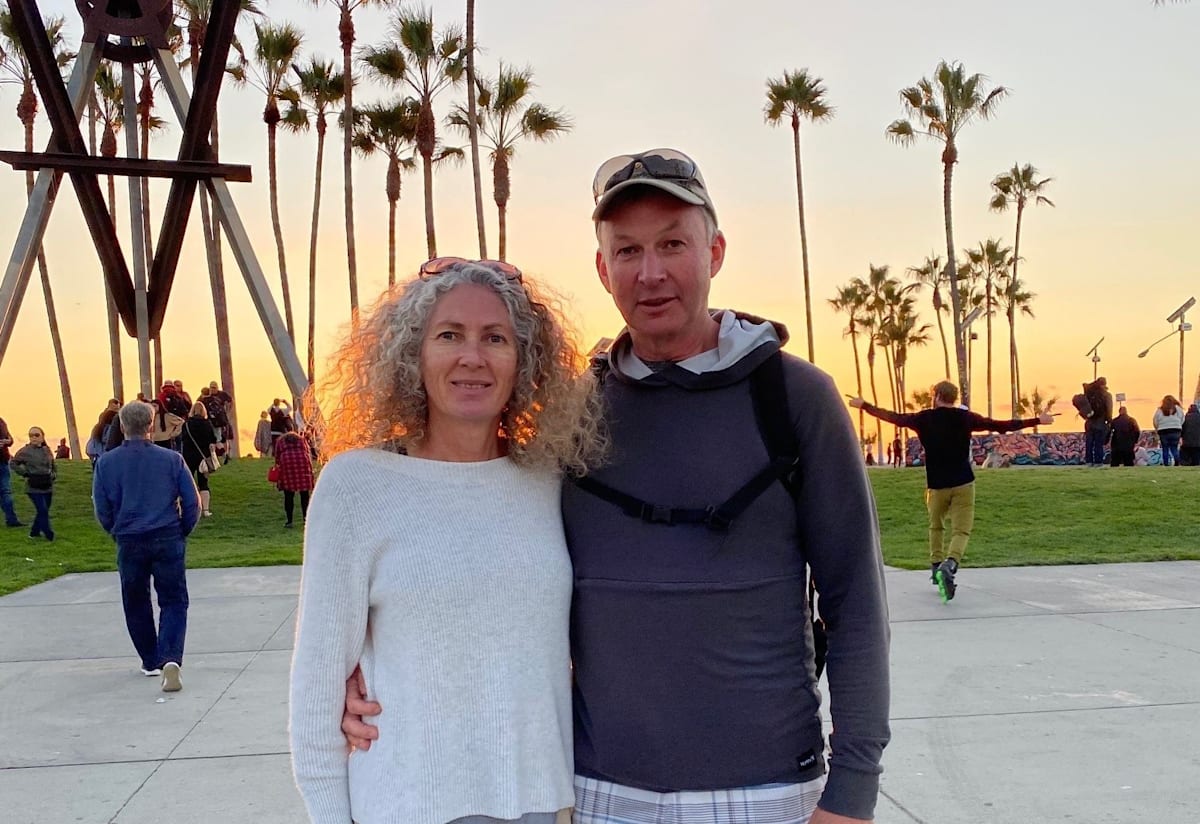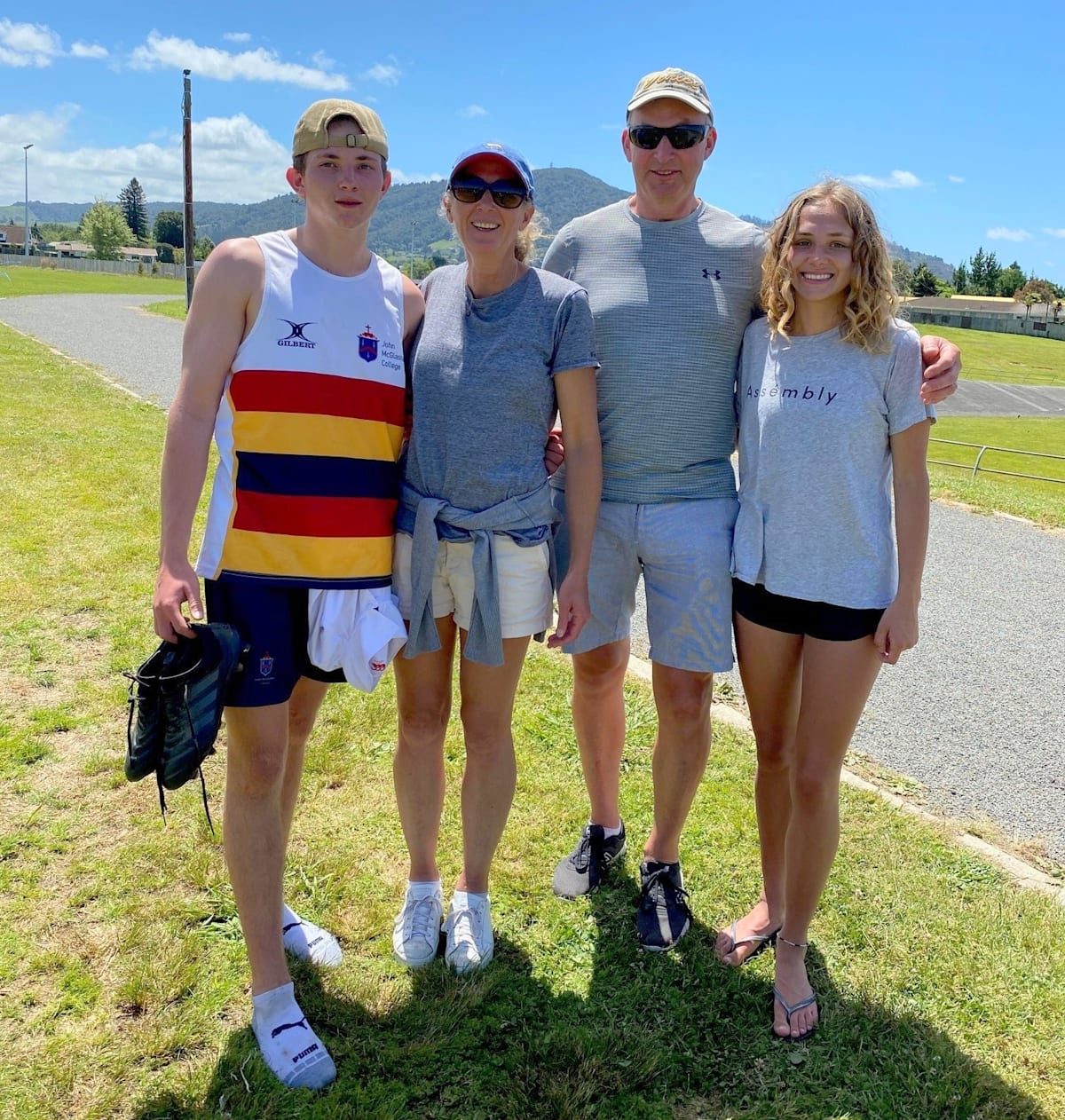
A young Dunedin dressmaker was one of the golden stars of the 1990 Auckland Commonwealth Games. Now Tania Murray's life has come full circle, David Leggat discovers.
Unless you're steeped in New Zealand athletics or Commonwealth Games history, you probably won't have heard of Tania Murray.
Yet she’s the holder of one of track and field's longer-standing national records and, had it not been for ill health as a young girl, she might not even have got into high jumping.
It’s funny the way life works out and there she is, still in the record books with her mark of 1.92m set this month 31 years ago.
But for Murray – now Murray Haigh, mother of two teenagers and living contentedly in Cromwell with her husband and their house renovation business – there’s no sense of wanting that mark to stay on the record list.
“I want to see someone else achieve that. It would be great,” she says today, aged 51. “I’m not hanging onto it. It’s definitely up there for the taking.”
The high point of Murray’s athletic career came on a hot January day at the 1990 Auckland Commonwealth Games at Mount Smart Stadium.
There she held off Northern Ireland’s Janet Boyle in a shootout for gold which lasted an age before Murray prevailed at 1.85m.
Bronze went to another New Zealander, Tracy Phillips, and fourth was another Kiwi, Trudy Woodhead.
It was the only athletics gold New Zealand won at those Games. Track and field also contributed two silver and six bronze towards the-then New Zealand Games record haul of 58.
But back to the start. Murray was born and raised in Ranfurly, a proud girl of the Maniototo – still is – and if you’re struggling to picture Ranfurly, thinks Peter Jackson’s Lord of the Rings trilogy, much of which was filmed around that spectacular part of the South Island.
For a time, athletics was the furthest thing from her mind as she battled a range of illnesses after an undiagnosed case of hepatitis. Rheumatic and glandular fever, and growths in her knees the size of golf balls among a list of ailments through to the age of 13.
But her doctor told her mother: “You’d better get her moving or she could end up in a wheelchair”.
“Sickness was definitely a driver,” Murray remembers.

Ranfurly didn’t have an athletics club, but she was taken to the Alexandra Athletics Club, for which she is ever grateful.
“I began track and field to get moving really. It became a part of me and was a passion.”
Murray loved her hockey. But after making a personal best high jump of 1.68m at Maniototo Area School to win the national junior champs in her early teens, she chose athletics when one sport had to take a back seat.
“We all thought it would be good to do the high jump because all you do is jump then sit down. That’s how I became a high jumper,” she laughs.
She moved to Dunedin with her family and from being at Maniototo Area School – roll around 50 – started at Logan Park High School, at about 1800 pupils. Big change.
“I was the country kid in the big school.”
Murray recalls at 15 making a goal – not only did she want to compete at the 1990 Commonwealth Games, just four years away, but “be good enough to be there,” she says.
“I wanted to put myself in a situation where I was going to qualify and going to be competitive when I got there. I was never going to win a gold medal, but when I look back, I think that was a huge goal at 15.”
Murray had a big slice of good fortune. Trevor Bent was among the country’s leading field event coaches and took her under his wing. Being from Dunedin helped too, and he remained her only coach.
“He was an amazing guy and unfortunately I don’t think he got the credit he deserved,” she says.
When Bent died in 2017, no less than 25 national records were achieved by athletes he’d coached.
“God help her, the crowd went mental, it was super sad."
Murray graduated to being national champion and admits now she didn’t take much notice of what other athletes were doing.
“I was just blindly focused on my own journey and trying to improve on what I thought I had to do. It was a bit weird,” she says.
Murray arrived at the Auckland Commonwealth Games as the national champion, was in good shape and jumping well. Her confidence was up.
“I was regularly jumping 1.88m, it was my home track, my family was there and my coach was right there. I was only 19 and thought all I have to do is jump up to my best, which I knew was close to 1.90m,” she says.
Strangely she recalls no-one gave her much chance. Even the New Zealand media were down the other end of the stadium watching Simon Poelman doing his pole vault.
“The Aussies were watching because they thought they’d win gold, silver and bronze. I know Simon told [the media] ‘Don’t be down here with me, get up to the high jump’.”
Eventually the field whittled down to the last two women standing.
They duelled for what seemed ages, both either jumping or missing at the same heights.
Then a strange thing happened. They were several metres apart at one point while the bar was being reset. Boyle approached Murray and “I think she was going to say ‘can we share it?’,” she recalls. “Like this is too hard. She opened herself up to me and I thought ‘she’s buggered’."
Then came another key moment. The pair had about 15 jumps each, and the bar was back down to 1.85m. The crowd fell silent "and my dad yelled out ‘Tarns, it’s only a training jump’.
“I could clear it in training, almost do it in my sleep.”
So she cleared the height and was ready to go again, but Boyle missed it. “God help her, the crowd went mental, it was super sad [for her],” Murray says.
Critics painted her as coming from nowhere. “But I’d been jumping those height maybe two years beforehand. Even the selectors said it was virtually a fluke. I thought ‘are you kidding me’?”
Back home she had her dose of celebrity status, people greeting her at the airport, plenty of media interest now, visits to her old schools showing off her medal. “It was pretty amazing.”
The Barcelona Olympics were coming up in two years. Murray jumped 1.92m in the qualifying period, an A standard.
She won the Australian and New Zealand high jump and triple jump titles between 1990-92. And yet she “had to find out from the media that my own selectors [for track and field] were not going to nominate me for Barcelona”.
Instead they sent a long distance male runner, who had produced a B qualifying standard.
“They put that in the paper. I was 20, my record at the Commonwealth Games was not enough to show them how I worked under pressure. They said ‘that’s not high enough or good enough’,” recalls Murray.
“It was the most heartbreaking time of my career. I should have finished athletics then. I was broken. They didn’t even talk to me.”
There’s no point relitigating the issue now. But it was far from the last time this would happen to New Zealand athletes.

Murray decided to try and turn the experience into a positive – “I’ll prove to them I can do this.”
She finished fourth in the 1994 Commonwealth Games in Victoria, Canada - a bizarre event where her run-up took her along the inside 200m lane as runners were coming round the bend.
Murray moved to Melbourne for a time, and switched to the triple jump. She qualified for the triple in 1998 and was heading to the Commonwealth Games in Kuala Lumpur -- and was on track to make the high jump as well - before dislocating an ankle joint in qualifying.
She never high jumped again. Murray took the hint and finally called time.
Having been in Christchurch for a period she returned to Central Otago – “the big open spaces I love so much and just started life”.
She spent about five years as sports coordinator at Cromwell College, did a lot of coaching of young children, taking them to Alexandra for those Wednesday night sessions and felt, understandably, that she was giving back. Almost full circle.
Around six years ago she started her own dressmaking business. It had long been an interest, having worked in that field since her late teens, and done a Polytech course in it.
Now she and husband, Russ, run their company, Lemon Fix - doing up old houses.
With children Jaide (who's represented New Zealand in age-group touch) now at Canterbury University and Caleb at John McGlashan College for his final year, Murray is in a happy space.
If there’s one regret, it’s that she didn’t take the time to celebrate her achievements as they happened. It was always about pushing for the next mark, the next performance.
“I do have a massive sense of achievement. Oh my goodness, I got myself to a level which was quite significant, although maybe at the time I didn’t think it was significant, or as good as maybe is seems now,” Murray says.
Not bad for someone who wasn’t meant to be a high jumper.
One other interesting point: Murray doesn’t watch athletics these days, doesn’t follow it.
“When I was competing, I wasn’t interested in anyone else, I was so focused on what I had to do,” she says.
“I do love to coach young people and passing knowledge over. But it’s just not in me to follow athletics as such.”







